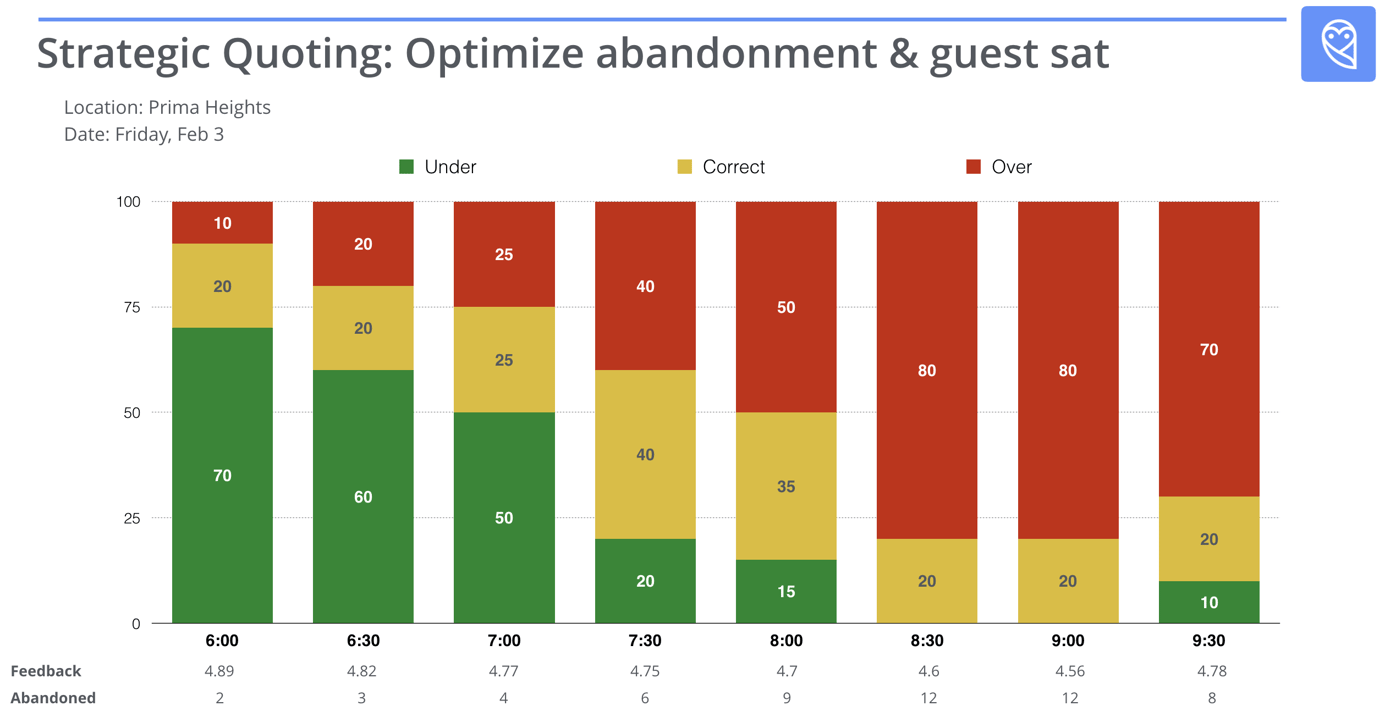

Stay tuned to the latest in restaurant Ops & Marketing. We email 2-3 times per month.

Major restaurant groups often know intuitively, or with hard data, that waitlist abandonment increases substantially with wait times.
One partner of ours saw 75% abandonment at 90 minute wait, and a 90% abandonment at 120 minutes. It became clear that as their restaurants get busier, quote accuracy suffers - with most of the mis-quoted parties being overquoted. This increases abandonment, further throwing off quote accuracy, creating a wicked downward spiral at the door.
Fixing the issue is meaningful. Improving seating efficiency means keeping the dining room fuller later, providing a better experience to the guest, and ultimately, greater profibality.
So, how can restaurants reduce overquoting (abandonment) and at the same time avoid underquoting (upset guests)?
We recommend a graph like this:

The solution
If 75% of guests with a 90 minute quote abandon the waitlist, the appropriate quote is not 90 minutes but far less. But how much less?
Knowing the answer requires data.
The winning ticket is to understand all of the factors that impact the wait (who's seated, who's waiting, who's abandoning, cook times of items being fired into the kitchen) in real time and factor all of them into quotes.
Consequently, restaurants need a three pronged solution:
First, a sophisticated wait time quoting algorithm that considers all the different data points associated with the current status of the waitlist, front of house, and back of house.
Second, awareness of who's abandoned the waitlist, so that guests can be made aware of updated quote times as people ahead of them in line abandon the waitlist.
Third, the ability to objectively evaluate the relationship between quote accuracy and abandonment.
This isn't a vision for the future. It's reality, today.